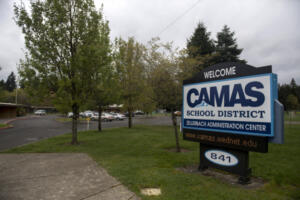Camas School District students are scheduled to go back to school next week, but ongoing contract negotiations between the Camas School District and its teachers’ union could delay the scheduled start of the 2023-24 school year.
Members of the Camas Education Association, the union representing 450 Camas educators, met Tuesday, Aug. 22, to discuss the contract negotiations.





